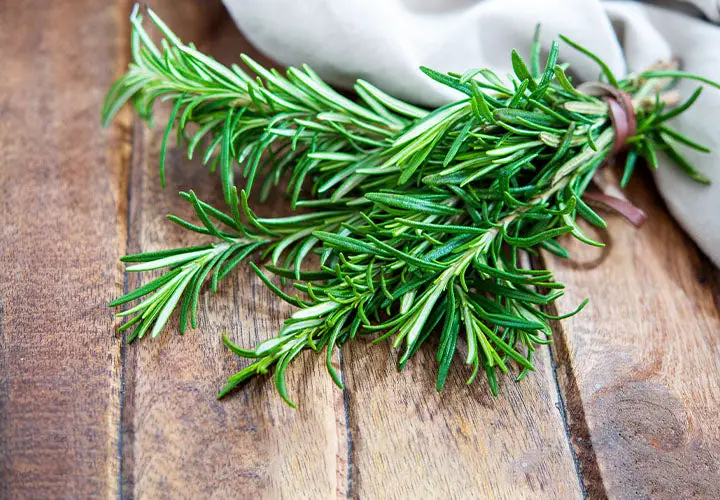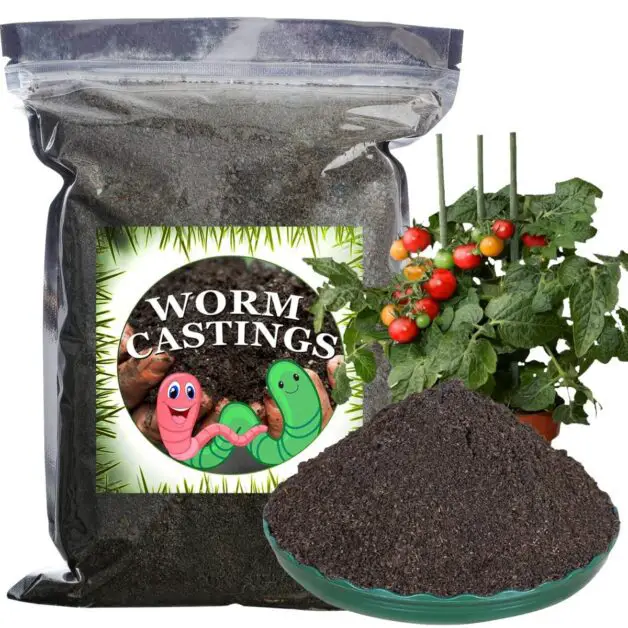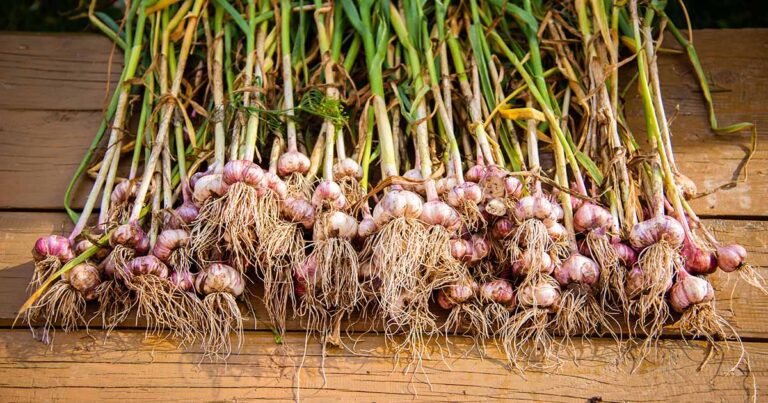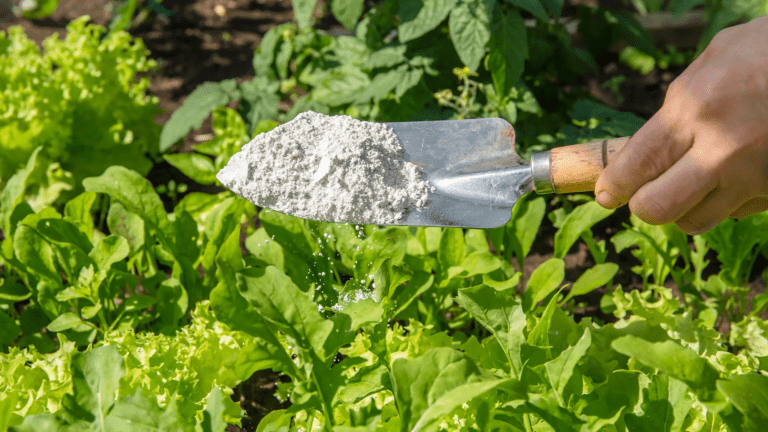Rosemary Cultivation: From Planting to Harvest
Did you know that rosemary has been used for centuries for its fragrant leaves and medicinal properties? If you’re interested in cultivating your own rosemary plant, you’ve come to the right place! From planting to harvest, we’ll guide you through the entire process of rosemary cultivation.
Our team of experienced gardeners and experts will provide you with authoritative and trustworthy information to ensure your rosemary plant thrives. We’ll cover everything from choosing the right soil and location to pruning and harvesting your rosemary plant.
So, whether you’re a seasoned gardener or just starting out, our comprehensive guide on rosemary cultivation is a must-read. By the end of this blog, you’ll have all the tools and knowledge you need to grow and enjoy your very own rosemary plant.
Table of Contents
The History and Origin of Rosemary
Rosemary, known scientifically as Rosmarinus officinalis, is an aromatic herb with a rich history and fascinating origin.
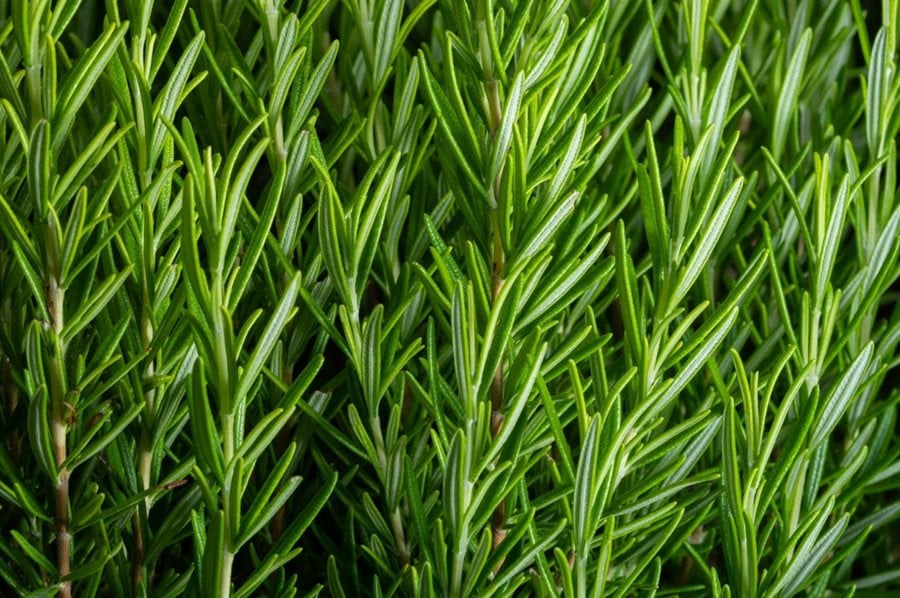
- Rosemary’s Cultural Significance: Believed to have originated in the Mediterranean, rosemary has been revered by ancient Greeks and Romans for its symbolic and medicinal properties, associated with love, loyalty, and remembrance. It was used in religious ceremonies, culinary dishes, and natural remedies, reflecting its deep cultural roots.
- Folklore and Mythology: Rosemary holds a special place in folklore, believed to ward off evil spirits and protect against illnesses. Placing rosemary under one’s pillow was thought to prevent nightmares and ensure restful sleep, adding to its mystical allure throughout history.
- Famous Legends: One intriguing legend involves Queen Elizabeth of Hungary, who used a rosemary tonic to heal her arthritis, leading to the creation of the renowned “Queen of Hungary Water.” Rosemary’s association with healing and rejuvenation is woven into various historical tales.
- Etymology of Rosemary: The name “rosemary” originates from Latin, meaning “dew of the sea,” reflecting its coastal habitat and aromatic essence. This name captures the herb’s connection to the sea breeze and its ability to thrive in salty, sandy environments, highlighting its natural origins and fragrant allure.
Understanding the Different Varieties of Rosemary
Rosemary, a popular aromatic herb, comes in a variety of cultivars, each with its distinct features and uses. Understanding the different varieties of rosemary can help you choose the one that best suits your needs and preferences. Some of the noteworthy varieties include:
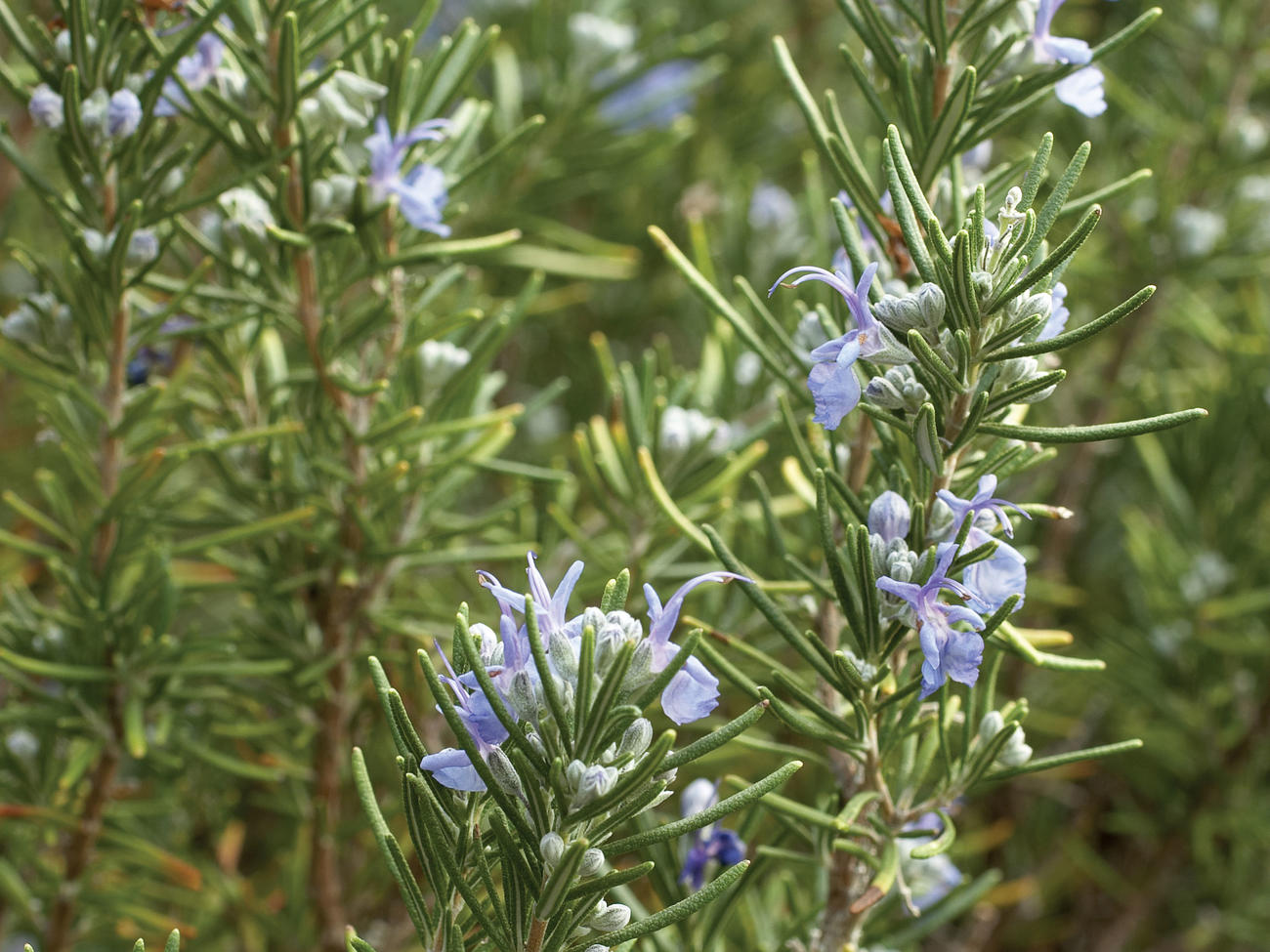
1. Tuscan Blue: This variety of rosemary is known for its robust flavor and strong fragrance. With its tall, upright growth habit and deep blue flowers, Tuscan Blue adds an ornamental element to any garden. It is a favorite among chefs for its culinary qualities, as it lends a rich flavor to roasted meats and vegetables.
2. Prostratus: As the name suggests, Prostratus is a prostrate rosemary with a trailing growth habit. Its cascading branches and delicate blue flowers make it an excellent choice for hanging baskets or as a ground cover in rock gardens. This low-growing variety is often used for its decorative appeal and as a flavorful addition to herb-infused oils and vinegars.
The following table explains about the different varieties of rosemary for gardens:
| Rosemary Variety | Growth Height (inches) | Flavor Intensity (Scale 1-5) | Cold Hardiness (USDA Zone) |
|---|---|---|---|
| 1. Arp | 24-36 | 4 | 6-9 |
| 2. Tuscan Blue | 36-48 | 5 | 7-10 |
| 3. Prostrate | 6-12 | 3 | 7-10 |
| 4. Spice Island | 18-24 | 4 | 7-10 |
| 5. Blue Spires | 24-36 | 4 | 7-10 |
One unique FAQ regarding rosemary varieties is:
Can I grow different varieties of rosemary together in the same garden?
Although it is possible to grow multiple varieties of rosemary together, it is important to consider their specific growth habits and requirements. Some varieties, such as Tuscan Blue, can grow quite tall and may shade out smaller, trailing varieties like Prostratus. It is advisable to provide enough space and sunlight for each variety to thrive. Additionally, take care to avoid cross-pollination if you plan to save seeds or propagate new plants from existing ones, as this can result in hybrid characteristics that may differ from the original variety.
Choosing the Right Location for Rosemary Cultivation
When choosing the right location for rosemary cultivation, it is important to consider a few key factors to ensure optimal growth and development of the plant.

Selecting a Suitable Location:
- Choose a location with ample sunlight, ideally receiving 6-8 hours of direct sunlight daily.
- Ensure the area has well-drained soil to prevent waterlogging and root rot.
- Consider the pH level of the soil, aiming for slightly acidic conditions between 6 and 7.
Assessing the Microclimate:
- Take into account the local climate conditions, especially sensitivity to extremely cold winters.
- Select a spot sheltered from strong winds and frost, especially in regions with harsh winters.
- Evaluate the area’s microclimate to ensure it provides suitable conditions for rosemary growth.
Considering Proximity to Other Plants:
- Be mindful of the proximity to other plants or trees, as rosemary can be a vigorous grower.
- Provide sufficient space for the rosemary plant to spread and avoid overcrowding with other vegetation.
- Ensure neighboring plants won’t shade or compete with the rosemary for sunlight and nutrients.
FAQ #1: Can I grow rosemary indoors or in containers?
Yes, rosemary can be grown indoors or in containers. In fact, growing rosemary in containers is an excellent option for those with limited garden space or unfavorable outdoor growing conditions. For successful container cultivation, choose a pot that is at least 12-16 inches deep to accommodate the root system. Ensure the container has drainage holes at the bottom and use a well-draining potting mix. Place the container in a sunny location, such as a south-facing window, and rotate it regularly to provide even sun exposure. Remember to water the rosemary plant thoroughly, allowing excess water to drain out, and avoid overwatering as it can lead to root rot.
By following these steps, you can effectively select the right location for cultivating rosemary, whether outdoors in the garden or indoors in containers, and create optimal growing conditions for this Mediterranean herb to thrive.
Soil Preparation for Rosemary Planting
Preparing the soil is a crucial step in ensuring successful growth and development of rosemary plants. To provide the optimal environment for your rosemary, start by choosing a location with well-draining soil and ample sunlight.

- Weed Removal:
- Clear the planting area of any weeds or unwanted vegetation. Weeds compete with rosemary for nutrients and moisture.
- Soil Loosening:
- Use a garden fork or tiller to loosen the soil to a depth of at least 8 inches. This promotes better root penetration and allows for improved water and nutrient absorption.
- Soil Improvement:
- If your soil is heavy or clay-like, enhance its drainage by adding organic matter. Options include:
- Compost: Mix well-rotted compost into the soil. Compost improves soil structure and provides essential nutrients.
- Well-Rotted Manure: Incorporate well-rotted manure to enhance soil fertility and drainage capabilities.
- If your soil is heavy or clay-like, enhance its drainage by adding organic matter. Options include:
- pH Consideration:
- Rosemary prefers slightly acidic soil with a pH level between 6 and 7.5. Test your soil’s pH and adjust if needed.
- Frost Protection:
- Choose a planting location that avoids areas prone to frost. Rosemary is not tolerant of freezing temperatures.
- Thorough Watering:
- Before planting, water the soil thoroughly to ensure good moisture distribution throughout the root zone.
Before planting, it is advisable to water the soil thoroughly to ensure good moisture distribution throughout the root zone. Following these steps will create an ideal foundation for healthy and thriving rosemary plants.
Propagation Methods for Growing Rosemary
Rosemary, with its delightful fragrance and versatility, is a popular herb among gardeners and culinary enthusiasts alike. Once you have established your rosemary plants, you may wonder about the best way to propagate them for future growth. Here, we will explore the different propagation methods for growing rosemary, answering some unique FAQs based on information not previously discussed in the article.
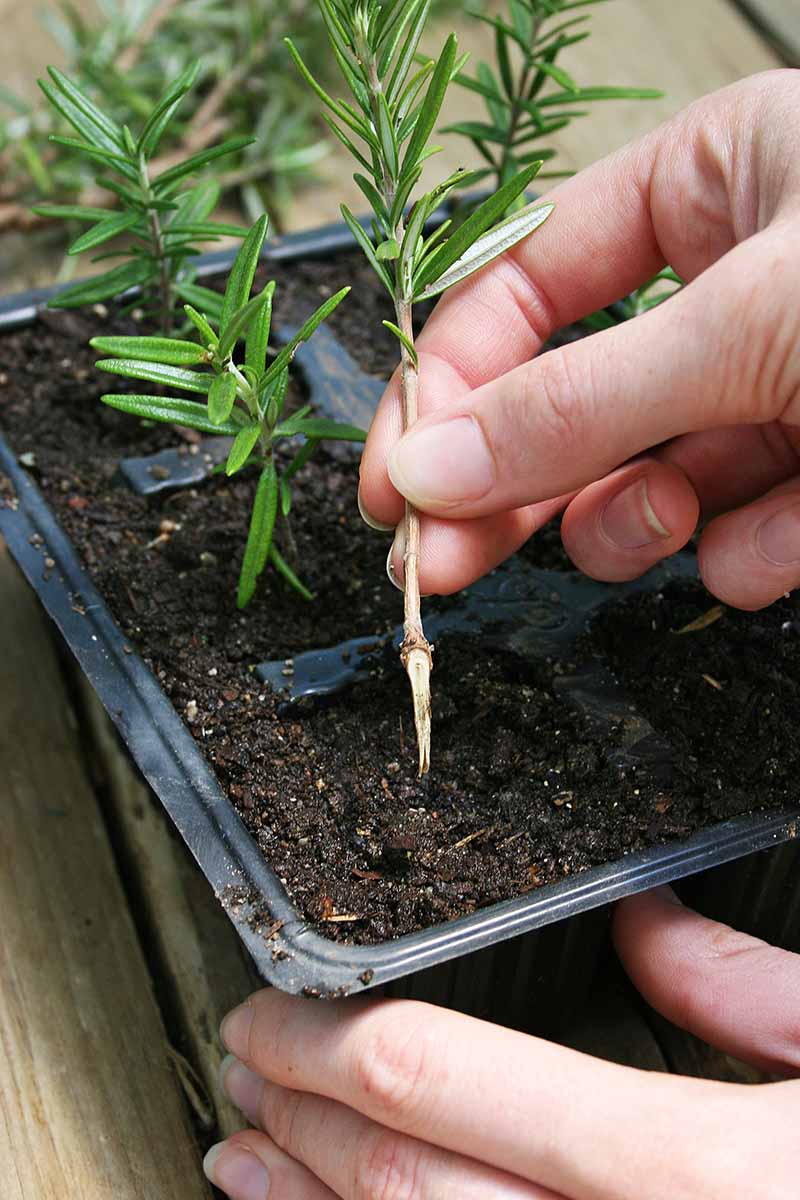
Select healthy, non-flowering branches for cutting, typically around 6 inches in length.
Remove lower leaves from the cutting and trim the cut end to promote root development.
Optionally, dip the cut end in rooting hormones to enhance root formation.
Plant the cutting in a well-draining potting mix and keep it consistently moist, avoiding waterlogging.
New roots should begin to form within a few weeks, indicating successful propagation.
Bend a low-growing, flexible branch of the mother plant down to the ground.
Cover a portion of the branch with soil, leaving the tip exposed.
Gently scrape the area to be layered to promote root formation.
Keep the soil around the layered branch consistently moist to encourage root growth.
After a few months, roots should begin to form.
Once roots have developed sufficiently, sever the rooted branch from the mother plant and transplant it into its own container or desired location in the garden.
In conclusion, rosemary can easily be propagated through stem cuttings or layering. Both methods have their advantages, and the choice ultimately depends on personal preference and gardening style. Experimenting with these propagation methods can be a rewarding experience, allowing you to expand your rosemary collection and share this aromatic herb with friends and family.
Seed Selection and Germination Process for Rosemary
When selecting seeds for rosemary cultivation, it is important to choose varieties that are suited to your specific needs and climate. There are several different types of rosemary seeds available, each with their own unique characteristics and growth habits.
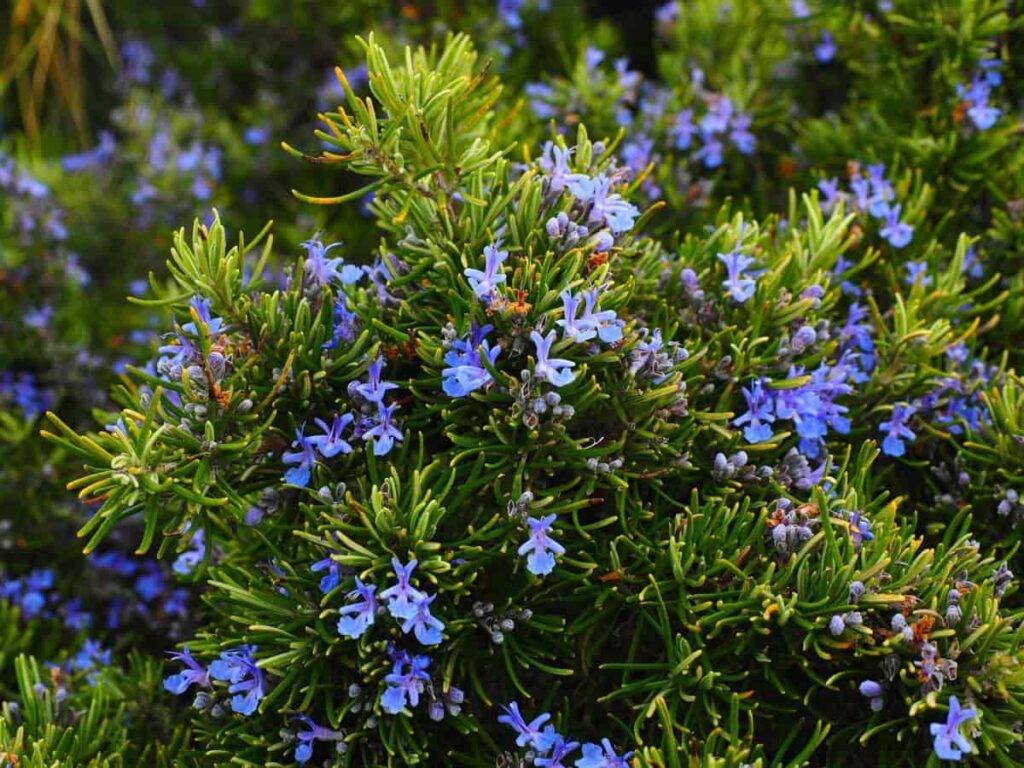
Popular Rosemary Varieties:
- ‘Arp’: Known for cold hardiness.
- ‘Tuscan Blue’: Prized for strong aroma and flavor.
- ‘Prostratus’: A trailing variety suitable for cascading over walls or containers.
- Consider desired growth habit, fragrance, and culinary value when selecting a variety.
Germination Process for Rosemary Seeds:
- Soak seeds in warm water for 24 hours to soften the seed coat and encourage germination.
- Place seeds in a shallow dish covered with water for soaking.
- Fill a seed tray or small pots with well-draining seed starting mix.
- Sow seeds on the surface of the soil and gently press them in.
- Mist the soil to ensure it’s moist but not waterlogged.
- Cover the tray or pots with a plastic dome or wrap them in a plastic bag to create a greenhouse-like environment.
- Place the tray or pots in a warm location with indirect sunlight, maintaining a temperature of around 70-75°F (21-24°C).
- Germination typically takes 14 to 30 days, depending on variety and conditions.
- Keep soil consistently moist throughout the germination period and check regularly for signs of sprouting.
Following these steps will help you successfully germinate rosemary seeds and start growing your own plants from scratch.
Using the Burpee Cell Self-Watering Seed Starting Kit has streamlined my seed germination process remarkably. The self-watering feature ensures consistent moisture levels, eliminating the need for constant monitoring and watering. The transparent lid creates a mini greenhouse environment, fostering optimal conditions for seedling development. While the compact size of the cells may require timely transplanting, the convenience and efficiency of this kit make it an invaluable tool for any gardener looking to jumpstart their growing season with ease.
- Self-Watering: Seed starter trays with self-watering features provide a consistent moisture level to seeds, promoting germination and healthy seedling growth.
- Convenience: These trays make it easy to start multiple seeds in a compact space, ideal for gardeners with limited garden or indoor space.
- Protection: The transparent lid or cover included with some trays helps create a mini greenhouse environment, protecting seedlings from harsh weather conditions and pests.
- Reusable: Many seed starter trays are reusable, offering long-term value and sustainability for gardeners.
- Organization: Seed starter trays help keep seeds organized and separated, making it easier to track different varieties or planting dates.
- Limited Size: Seed starter trays may have limited cell space, restricting the growth of seedlings before they need transplanting.
- Drainage Issues: Some self-watering trays may experience drainage problems, leading to waterlogging and root rot if not properly managed.
- Cost: Seed starter trays with advanced features like self-watering can be more expensive than traditional trays or DIY alternatives.
- Plastic Dependency: Many seed starter trays are made of plastic, contributing to environmental concerns regarding plastic waste.
Transplanting Rosemary Seedlings into Containers or the Garden
When it comes to transplanting rosemary seedlings into containers or the garden, there are a few key steps to keep in mind for a successful transition.

- Firstly, it is important to choose a container or garden spot that allows for proper drainage. Rosemary plants need well-draining soil, as they do not thrive in excessive moisture. You can mimic their native Mediterranean habitat by using a slightly sandy soil mix.
- If you’re starting from seeds, soak them for 24 hours before planting to improve germination. Scatter the seeds in a tray filled with moist seed-starting mix and cover them lightly with the mix. Keep the mix moist and cover the tray with plastic wrap to trap moisture. Place the tray on a heat mat to keep the soil between 80°F and 90°F.
- Once seedlings appear, remove the plastic wrap and place the tray in bright light. Move the seedlings to individual pots or outdoors if the weather is warm.
- If you’re transplanting seedlings, prepare them by gradually acclimating them to their new environment through a process called hardening off. This involves gradually exposing the seedlings to outdoor conditions, starting with a few hours in a shaded area and increasing the exposure over the course of a week.
- When transplanting, gently loosen the root ball and place the seedlings at the same depth as they were in their previous containers. Water the seedlings thoroughly after transplanting to promote root establishment.
With proper care and attention during the transplanting process, your rosemary seedlings will thrive in their new location, whether it’s in containers or the garden.By following these tips, you can successfully grow and care for rosemary plants, whether in containers or in the garden.
Proper Watering Techniques for Rosemary Plants
Rosemary plants require careful attention to watering in order to thrive. It is important to strike a balance when it comes to watering this herb, as both under- and over-watering can be detrimental to its growth. So, what are the proper watering techniques for rosemary plants?
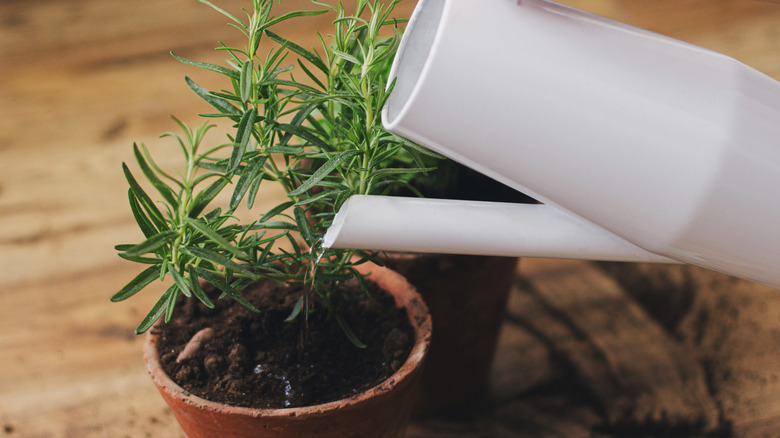
- First and foremost, it’s crucial to note that rosemary prefers well-drained soil.
- This means that excessive moisture can lead to root rot and other issues.
- To prevent this, you should water your rosemary plants deeply but infrequently.
- Aim for watering the plants once a week, making sure that the water penetrates the soil to a depth of at least 6 inches.
- This encourages the plant’s roots to grow deeper, making them more resilient and able to access water during dry periods.
However, it is equally important not to let the soil become bone-dry between waterings, as this can cause the plant to stress and hinder its growth. Keep an eye on the soil’s moisture level by sticking your finger about an inch deep into the soil. If it feels dry at that depth, it’s time to water again.
Fertilizing Rosemary Plants for Optimal Growth and Health
Fertilizing plays a crucial role in ensuring optimal growth and health of rosemary plants. When it comes to fertilization, it is important to choose the right type and timing to provide the necessary nutrients without overfeeding the plant.

- Fertilizer Type:
- Choose a well-balanced fertilizer with a higher nitrogen content for rosemary.
- Look for an N-P-K ratio of around 10-10-10 or 14-14-14.
- Organic Options:
- Organic fertilizers like compost or worm castings are beneficial.
- They release nutrients slowly and improve soil health.
- Application Frequency:
- Fertilize rosemary plants every four to six weeks during the growing season (spring to early fall).
- Manufacturer’s Instructions:
- Follow the instructions provided by the fertilizer manufacturer.
- Over-fertilizing can lead to excessive vegetative growth and affect flavor and aroma.
- Homemade Fertilizer:
- Yes, you can use homemade fertilizers.
- A popular mix includescompost tea and liquid seaweed extract:
- Steep well-aged compost in water for a few days.
- Strain the compost tea.
- Add liquid seaweed extract and dilute according to package instructions.
- Use this solution to water your rosemary plants once a month.
The following table explains about the fertilizing rosemary plants for optimal growth and health:
| Fertilizer Element | Application Frequency | Application Rate | Best Time for Application |
|---|---|---|---|
| Nitrogen (N) | Once every 4-6 weeks | 1/4 cup per plant | Early spring and late spring. |
| Phosphorus (P) | Once every 8-12 weeks | 1/8 cup per plant | Early spring and midsummer. |
| Potassium (K) | Once every 8-12 weeks | 1/8 cup per plant | Early spring and midsummer. |
| Calcium (Ca) | Once every 6 months | 1/2 cup per plant | Early spring and late summer. |
| Magnesium (Mg) | Once every 6 months | 1/4 cup per plant | Early spring and late summer. |
| Sulfur (S) | Once every 6 months | 1/8 cup per plant | Early spring and late summer. |
| Iron (Fe) | Once every 4-6 weeks | Foliar spray with chelated iron | Early spring and late spring. |
By following these guidelines, you’ll ensure healthy and thriving rosemary plants! 🌿🌱
Incorporating worm castings into my gardening routine has yielded impressive results for my strawberry plants. Their nutrient-rich composition has visibly improved the health and vigor of the plants, leading to larger yields of delicious berries. I appreciate the organic and sustainable nature of worm castings, knowing that I’m nourishing my garden without harming the environment. While the initial cost may be slightly higher than synthetic fertilizers, the long-term benefits for both my plants and the soil make it a worthwhile investment for any gardener looking to cultivate healthy and bountiful crops.
✅ Microbial Activity: They contain beneficial microorganisms that help improve soil structure, promote nutrient uptake by plants, and suppress soil-borne diseases.
✅ Slow Release: Worm castings release nutrients slowly over time, providing a steady and long-lasting source of nutrition for plants.
✅ Non-Burning: Unlike synthetic fertilizers, worm castings are gentle on plants and won’t burn delicate roots, making them suitable for sensitive plants like strawberries.
✅ Improves Soil Health: Regular application of worm castings can enhance soil fertility, increase water retention, and stimulate beneficial microbial activity.
✅ Environmentally Friendly: Worm castings are a sustainable and eco-friendly fertilizer option, as they are made from organic waste materials and help reduce the need for chemical fertilizers.
❌ Limited Nutrient Content: While nutrient-rich, worm castings may not provide all the essential nutrients plants need in large quantities, requiring supplementation with other fertilizers or amendments.
❌ Potential Odor: If not properly composted, worm castings can have a distinct earthy odor that may be off-putting to some gardeners.
❌ Storage: Worm castings should be stored in a cool, dry place to prevent mold or fungal growth, which can reduce their effectiveness.
❌ Quality Control: The quality of worm castings can vary depending on factors such as the type of worms used, the feedstock materials, and the composting process.
Pruning and Training Rosemary for Bushier Growth
Pruning and training rosemary plants are essential tasks for promoting bushier growth and maintaining the overall health and appearance of the plant.

Benefits of Regular Pruning:
- Prevents rosemary from becoming woody and encourages new growth.
- Controls the size and shape of the plant, making it more compact and attractive.
- Essential for maintaining a healthy and vigorous plant in garden or container settings.
Pruning Tools and Technique:
- Use clean and sharp pruning shears to make clean cuts and avoid damage to the plant.
- One common method is the “pinching” technique:
- Pinch off the tips of the branches, removing about 1/3 of the growth.
- Repeat regularly throughout the growing season, especially in spring and early summer.
- Pinching promotes branching and stimulates the growth of new shoots.
- Avoid pinching too hard or pruning too much to prevent weakening the plant.
- Leave some older growth intact to maintain a healthy and robust plant structure.
By regularly employing the pinching technique and using proper pruning tools, you can ensure that your rosemary plant remains healthy, bushy, and visually appealing throughout its growth cycle.
Managing Pests and Diseases in Rosemary Cultivation
Common Pests in Rosemary Cultivation:
One of the challenges in rosemary cultivation is dealing with pests that can infest the plants. The most common pests that affect rosemary include aphids, spider mites, and whiteflies.
Aphids are tiny insects that suck the sap from the plant, causing stunted growth and distorted leaves. Spider mites, on the other hand, are tiny red or yellow pests that feed on the leaves, leaving behind a fine webbing. Whiteflies are small, white insects that typically gather on the undersides of the leaves, and their infestation can weaken the plant over time. It is important to monitor the plants regularly and take prompt action at the first sign of infestation.
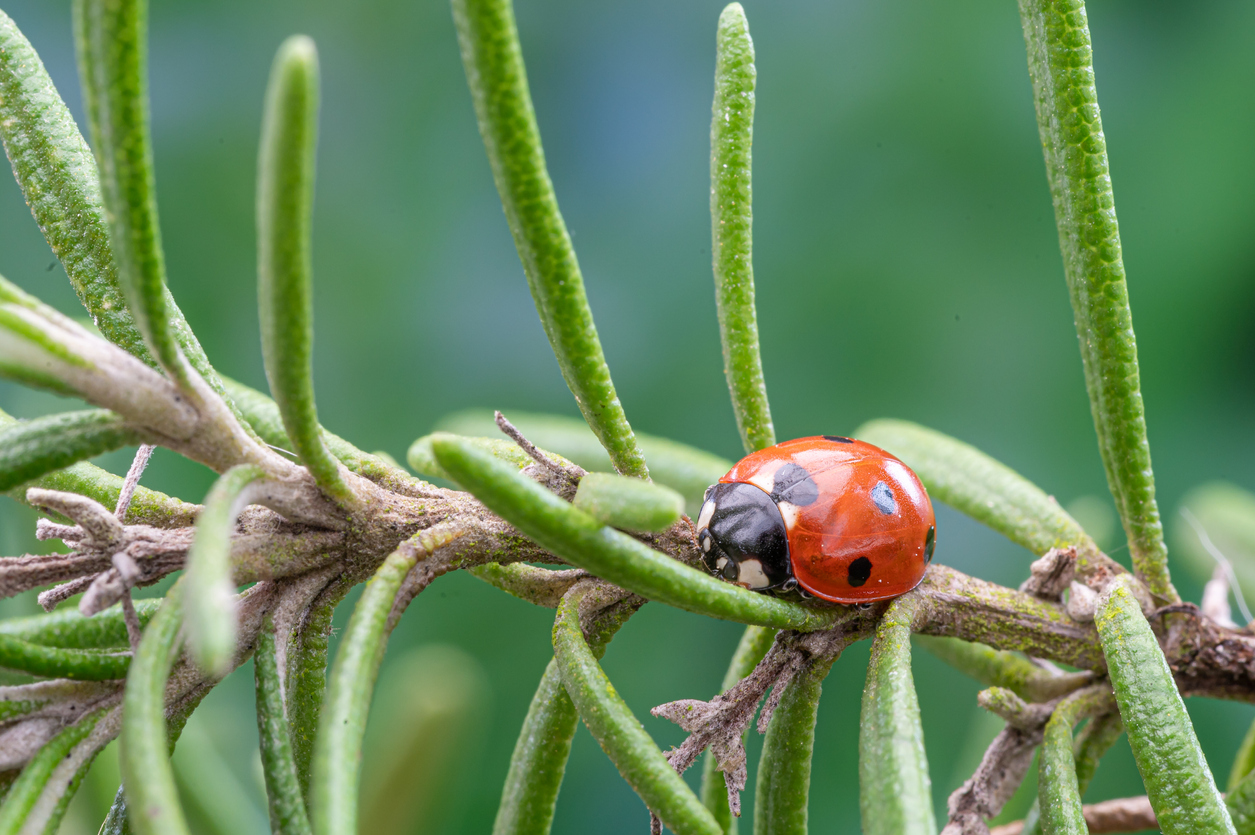
Effective Pest Control Measures:
There are several ways to effectively manage pests in rosemary cultivation.
One natural and non-toxic method is to introduce beneficial insects, such as ladybugs or lacewings, which prey on aphids and other pests. Additionally, using a strong jet of water to dislodge aphids and mites from the plant can be effective. Another approach is making a homemade insecticidal soap by mixing mild liquid soap with water and spraying it on the affected plants.
Alternatively, organic insecticides that specifically target the pests can be used as a last resort if the infestation becomes severe. Regularly removing any fallen leaves or debris around the plants can also deter pests from multiplying. By implementing these measures, rosemary cultivators can keep their plants healthy and pest-free.
Harvesting Rosemary Leaves for Culinary and Medicinal Use

One common question that arises when it comes to harvesting rosemary leaves for culinary and medicinal use is, “When is the best time to harvest the leaves?”
Ideally, you should wait until the plants have reached a height of at least 8 to 10 inches before harvesting. This ensures that the plant has had enough time to establish itself and develop a strong root system. Additionally, it is recommended to harvest rosemary leaves in the morning, after the dew has dried, but before the heat of the day sets in. This is when the plant is at its most aromatic and flavorful.
Another frequently asked question is, “How should I harvest the rosemary leaves?”
To harvest the leaves, simply use a pair of sharp pruning shears or scissors to cut off the sprigs. It is generally best to remove only a small portion of the plant at a time, leaving at least two-thirds of the growth intact. This allows the plant to continue growing and produces a better yield over time. After harvesting, you can either use the fresh rosemary leaves immediately or store them properly for later use.
Drying and Storing Rosemary Properly
Once you have harvested your rosemary, the next step is to dry and store it properly to ensure maximum flavor and longevity. Drying rosemary is simple and can be done using various methods.
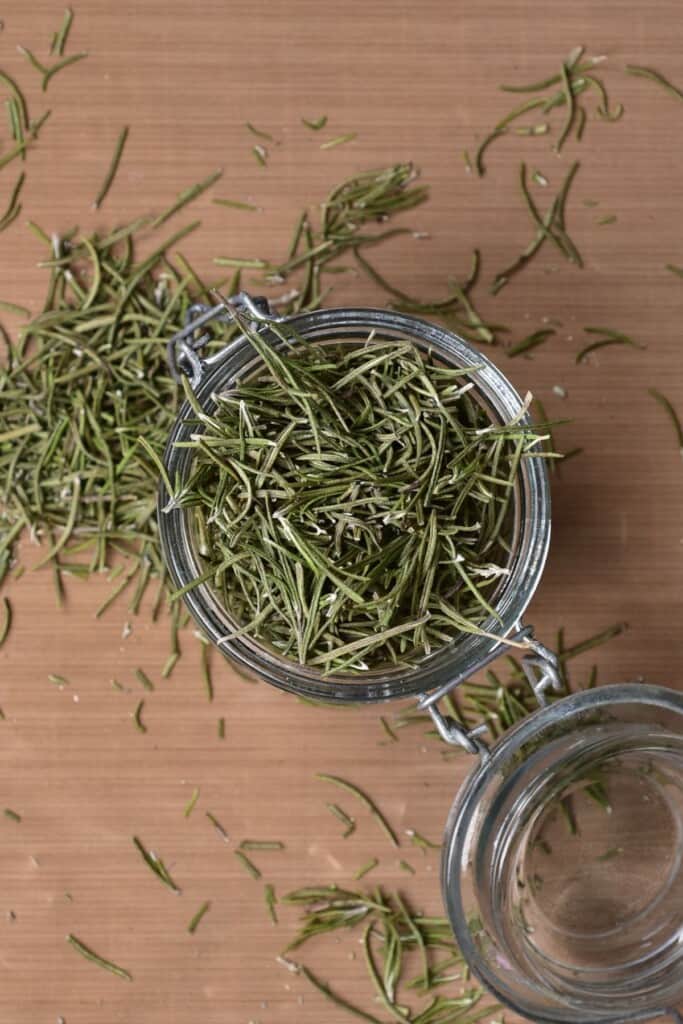
- Drying Rosemary:
- Method 1: Air Drying
- Hang rosemary sprigs upside down in a cool, dry place with good air circulation.
- Allow moisture to evaporate slowly, preserving essential oils.
- Method 2: Oven Drying
- Spread rosemary sprigs on a baking sheet.
- Place them in an oven set to the lowest temperature.
- Keep a close eye to prevent burning.
- Ensure rosemary is completely dry before storing.
- Method 1: Air Drying
- Storing Dried Rosemary:
- Use an airtight container to maintain potency.
- Options:
- Glass jars with tight-fitting lids.
- Resealable plastic bags.
- Store containers in a cool, dark place to prevent flavor degradation.
- Avoid proximity to heat sources (e.g., stove).
- Label containers with the drying date for freshness tracking.
By following these steps, you can enjoy flavorful and aromatic rosemary year-round! 🌿🌱
Using Rosemary in Cooking and Recipes
Rosemary is a versatile herb that adds a delightful flavor and aroma to various culinary dishes. Its strong, woody taste pairs well with a variety of meats, vegetables, and even desserts. But how exactly can you incorporate rosemary into your cooking and recipes? Here are some unique FAQs to help you make the most out of this fragrant herb in your culinary adventures.
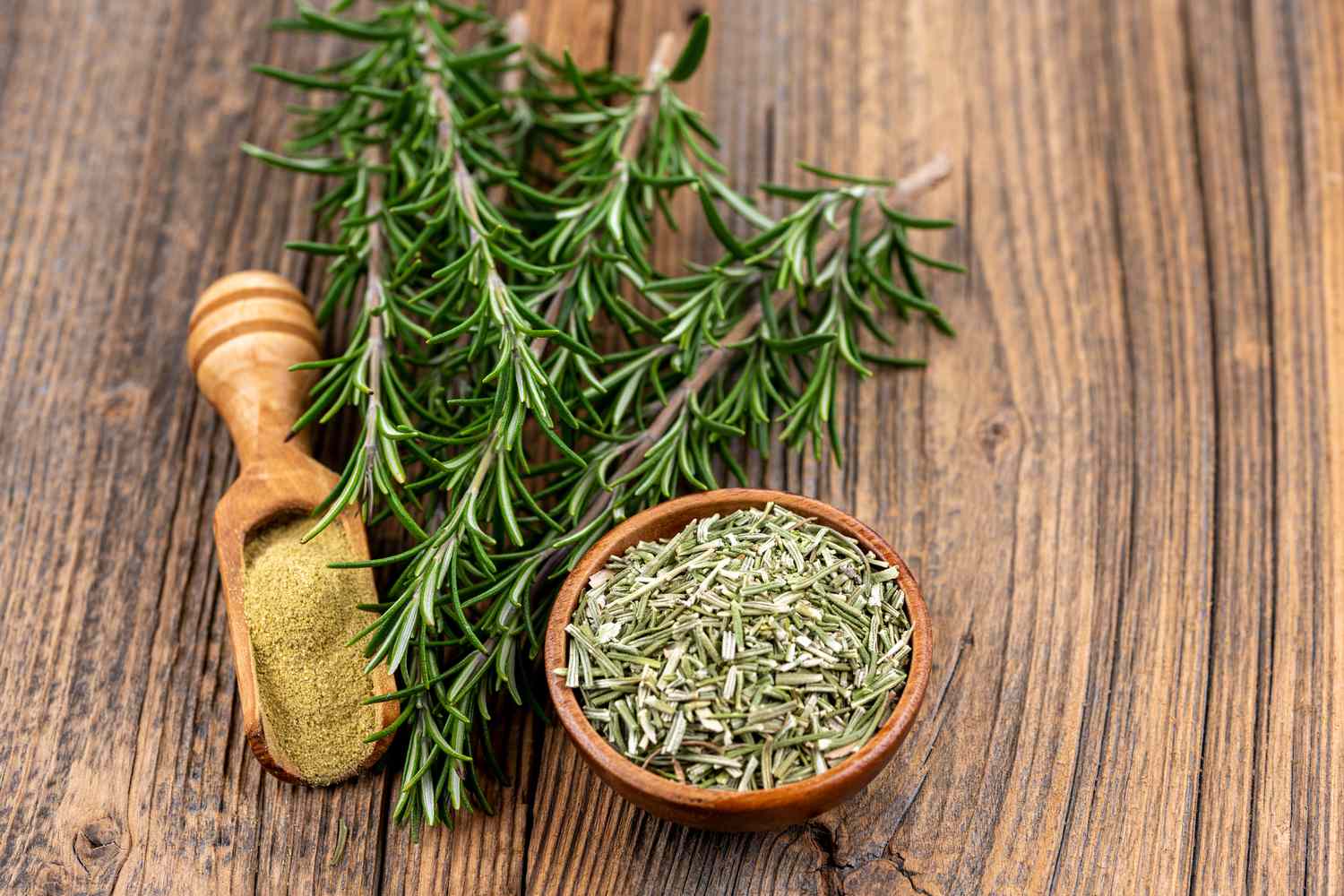
1. Can I use fresh rosemary instead of dried rosemary in my recipes?
Absolutely! While dried rosemary is more concentrated in flavor, fresh rosemary can add a vibrant and aromatic touch to your dishes. Simply strip the leaves off the stem and finely chop them before adding to your recipe. Keep in mind that the potency of fresh rosemary may be milder than dried, so adjust the amount accordingly.
2. What are some creative ways to use rosemary in cooking?
Apart from the traditional uses of rosemary in roasts, stews, and soups, there are plenty of inventive ways to incorporate this herb in your cooking. Infuse it into olive oil for a fragrant drizzle over grilled vegetables or bruschetta. Sprinkle minced rosemary on top of roasted potatoes for an earthy burst of flavor. You can even experiment with rosemary-infused cocktails or incorporate it into sweet treats like rosemary-infused honey or cookies. The possibilities are endless when it comes to exploring the culinary potential of this versatile herb.
Benefits and Uses of Rosemary in Traditional Medicine
Rosemary has long been revered for its numerous health benefits and its use in traditional medicine.
Health Benefits of Rosemary:
- Contains compounds like rosmarinic acid, camphor, and alpha-pinene with anti-inflammatory, antioxidant, and antimicrobial properties.
- Used in traditional medicine to alleviate digestive issues, headaches, and respiratory conditions.
- Believed to stimulate circulation, improve memory and concentration, and boost the immune system.
Rosemary for Hair Growth:
- Rosemary oil traditionally used to promote hair health and stimulate growth.
- Antimicrobial properties may prevent scalp infections, supporting hair growth.
- Improved blood circulation may enhance nutrient delivery to hair follicles.
- Further research needed to fully substantiate claims, but many users report positive results.
Rosemary for Mental Well-being:
- Traditional remedy for anxiety and depression.
- Aroma may have a calming effect on the nervous system, reducing stress and promoting relaxation.
- Antioxidant compounds may protect brain cells from oxidative stress and inflammation, potentially improving cognitive function.
- Should not replace prescribed medications for mental health conditions; consult with a healthcare professional before use.
By understanding the health benefits and traditional uses of rosemary, individuals can make informed decisions about incorporating it into their wellness routines.
Tips for Overwintering Rosemary Plants
overwintering
One common question that arises when it comes to overwintering rosemary plants is whether or not they should be brought indoors during the colder months. While rosemary is a hardy perennial, it is sensitive to freezing temperatures and can suffer damage or even die if left exposed to extreme cold. Therefore, it is generally recommended to bring potted rosemary plants indoors when temperatures drop below 30°F (-1°C).
water rosemary plants during the winter
Another frequently asked question is how often to water rosemary plants during the winter. As with many other types of plants, the watering needs of rosemary decrease during the dormant period. It is important to find the right balance in providing enough moisture to keep the plant healthy without overwatering it. A good rule of thumb is to allow the top inch (2.5 cm) of soil to dry out between waterings. This will help prevent root rot, which can be a common problem for rosemary plants in winter. Additionally, it is advisable to use room temperature water to avoid shocking the roots with cold water.
Watch video for more information:
fAQ
What is the history and origin of rosemary?
Rosemary (Rosmarinus officinalis) is a woody, perennial herb native to the Mediterranean region.
How many different varieties of rosemary are there?
There are several different varieties of rosemary, including ‘Tuscan Blue’, ‘Arp’, ‘Prostratus’, and ‘Salem’.
What is the ideal location for cultivating rosemary?
Rosemary prefers full sun and well-drained soil, so choosing a location with plenty of sunlight and good drainage is important for successful cultivation.
How should I prepare the soil for planting rosemary?
Rosemary thrives in sandy or loamy soil with a pH level between 6 and 7.5. It’s best to amend the soil with organic matter to improve drainage and fertility before planting.
What are the different propagation methods for growing rosemary?
Rosemary can be propagated through stem cuttings, layering, or by dividing an established plant.
How do I select and germinate rosemary seeds?
Choose seeds from a reputable source and follow the germination instructions on the packet. Rosemary seeds can be slow to germinate and may require a period of cold stratification.
How do I transplant rosemary seedlings into containers or the garden?
Transplant rosemary seedlings when they are around 3-4 inches tall and have a strong root system. Carefully remove them from their containers and plant them in well-prepared soil, spacing them about 2-3 feet apart.
What are the proper watering techniques for rosemary plants?
Rosemary prefers dry to moderately moist soil. Water deeply and infrequently, allowing the soil to dry out between waterings.
How should I fertilize rosemary plants for optimal growth and health?
Use a balanced, slow-release fertilizer in early spring and then again in midsummer. Avoid over-fertilizing, as rosemary prefers lean soil.
How should I prune and train rosemary for bushier growth?
Prune rosemary lightly after flowering to maintain its shape and encourage bushier growth. Remove dead or damaged branches and trim back any overly long growth.
How can I manage pests and diseases in rosemary cultivation?
Common pests of rosemary include aphids, spider mites, and whiteflies. Use natural pest control methods such as insecticidal soaps or oils, or introduce beneficial insects to control pest populations. Proper sanitation and good cultural practices can help prevent diseases.
When and how should I harvest rosemary leaves for culinary and medicinal use?
Harvest rosemary leaves as needed throughout the growing season. Cut sprigs from the plant, leaving at least two-thirds of the plant undisturbed to ensure continued growth.
How do I dry and store rosemary properly?
Dry rosemary by hanging the sprigs upside down in a well-ventilated area out of direct sunlight. Once dry, remove the leaves from the stems and store them in an airtight container in a cool, dark place.
How can I use rosemary in cooking and recipes?
Rosemary is a versatile herb that can be used in a variety of dishes, including meats, vegetables, bread, and desserts. It adds a unique flavor and aroma to recipes.
What are the benefits and uses of rosemary in traditional medicine?
Rosemary has been used in traditional medicine for its potential health benefits, such as improving digestion, boosting memory and concentration, and relieving muscle pain.
What are some tips for overwintering rosemary plants?
To overwinter rosemary plants, bring them indoors before the first frost, place them in a sunny window or under grow lights, and reduce watering. Monitor for pests and diseases and provide proper ventilation to prevent issues.

Studied Agricultural Engineering-Plant Protection at University of California, Davis.
Head of Content writing team at Southelmontehydroponics.com

